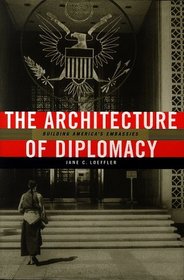Search -
The Architecture of Diplomacy: Building America's Embassies
The Architecture of Diplomacy Building America's Embassies
Author:
The Architecture of Diplomacy explores the often innovative architectural design of America's embassies, the partisan governmental battles that made them possible, and the political ramifications of their construction. Beginning with the inception of the U.S. embassy building program in 1926, and continuing through the 1996 competitio... more »
Author:
The Architecture of Diplomacy explores the often innovative architectural design of America's embassies, the partisan governmental battles that made them possible, and the political ramifications of their construction. Beginning with the inception of the U.S. embassy building program in 1926, and continuing through the 1996 competitio... more »
ISBN-13: 9781568981383
ISBN-10: 1568981384
Publication Date: 10/1/1998
Pages: 306
Rating: ?
ISBN-10: 1568981384
Publication Date: 10/1/1998
Pages: 306
Rating: ?
0 stars, based on 0 rating
Publisher: Princeton Architectural Press
Book Type: Hardcover
Members Wishing: 1
Reviews: Amazon | Write a Review
Book Type: Hardcover
Members Wishing: 1
Reviews: Amazon | Write a Review
Genres:
- Engineering & Transportation >> Architecture >> General
- Engineering & Transportation >> Architecture >> Regional >> General
- Engineering & Transportation >> Architecture >> Buildings >> General
- Engineering & Transportation >> Architecture >> History




